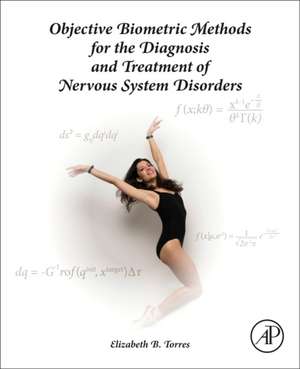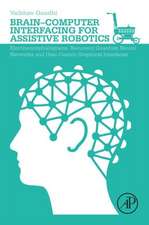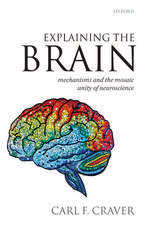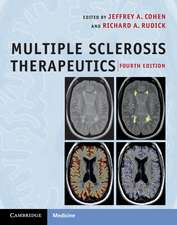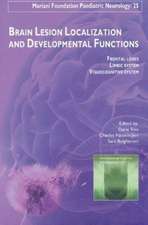Objective Biometric Methods for the Diagnosis and Treatment of Nervous System Disorders
Autor Elizabeth B. Torresen Limba Engleză Hardback – 21 iun 2018
- Provides methods and their implementation using real data and simple computer programs that students and researchers from less technically trained fields can use
- Describes the motivation for methods according to the problem domain in light of existing methods for each chapter, along with their lack of neuroscientific foundation and invalid statistical assumptions
- Accompanied by a companion website which contains Appendices with MATLAB codes and data samples to generate the graphics displayed in all chapter figures
- Features videos illustrating the experimental set up for scenarios and methods described in each chapter
- Includes step-by-step explanations of paradigms in each clinical or typical sample population to enable reproducibility of the study across different clinical phenotypes and levels of expertise in sports, the performing arts, or mere individual academic predispositions/preferences
Preț: 596.20 lei
Preț vechi: 767.73 lei
-22% Nou
Puncte Express: 894
Preț estimativ în valută:
114.08€ • 119.11$ • 94.42£
114.08€ • 119.11$ • 94.42£
Carte tipărită la comandă
Livrare economică 29 martie-12 aprilie
Preluare comenzi: 021 569.72.76
Specificații
ISBN-13: 9780128040829
ISBN-10: 0128040823
Pagini: 580
Dimensiuni: 191 x 235 x 39 mm
Editura: ELSEVIER SCIENCE
ISBN-10: 0128040823
Pagini: 580
Dimensiuni: 191 x 235 x 39 mm
Editura: ELSEVIER SCIENCE
Public țintă
Neuroscientists, computational neuroscientists. graduate students in biological and biomedical sciences, post-doctoral fellows, researchers, neurologistsCuprins
1. The closed feedback loops between the peripheral and the central nervous systems, the principle of reafference and its contribution to the definition of the self 2. Critical ingredients for proper social interactions: Rethinking the mirror neuron system theory3. The case of autism spectrum disorders: When one cannot properly feel the body and its motions from the start of life 4. The case of schizophrenia: Is that my arm moving on purpose or spontaneously passing by? 5. Learning to be an expert in sports and the performing arts: Teaching sensory-motor physiology to psychology students from the start of their clinical careers6. Rethinking diagnoses and treatments of disorders: The third (objective) neutral observer assessing the interactions between the examiner and the examinee or the therapist and the client 7. Cutting risk, cost and time in clinical trials with the help of big pharma 8. Adding dynamics to the principle of reafference: Recursive stochastic feedback closed control loops to evoke autonomy
